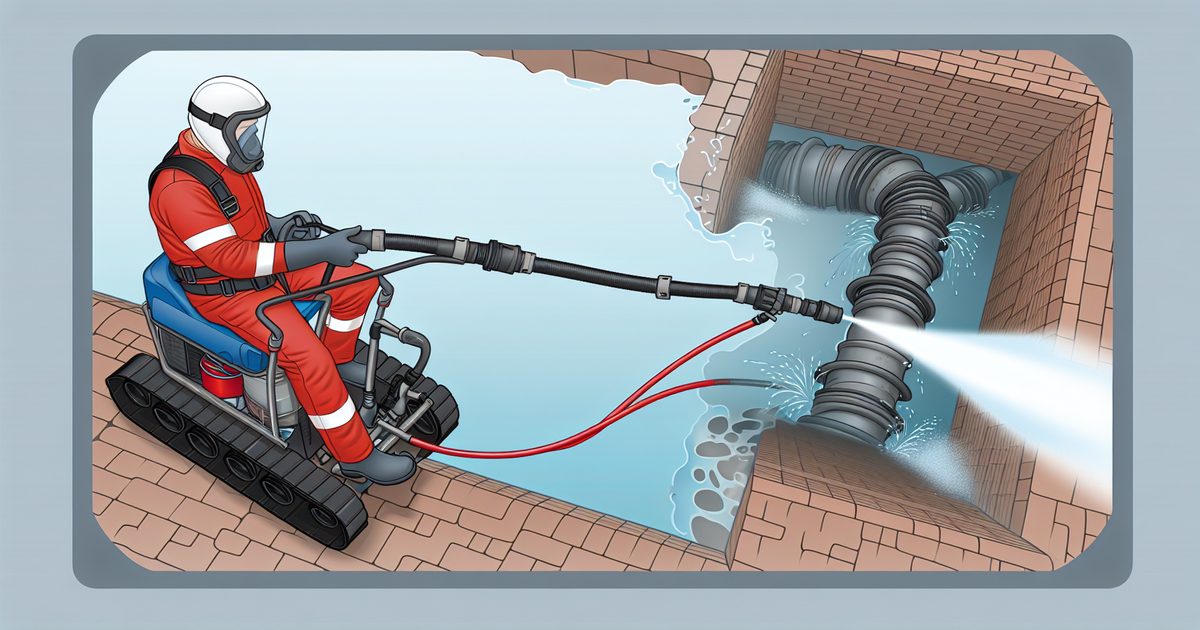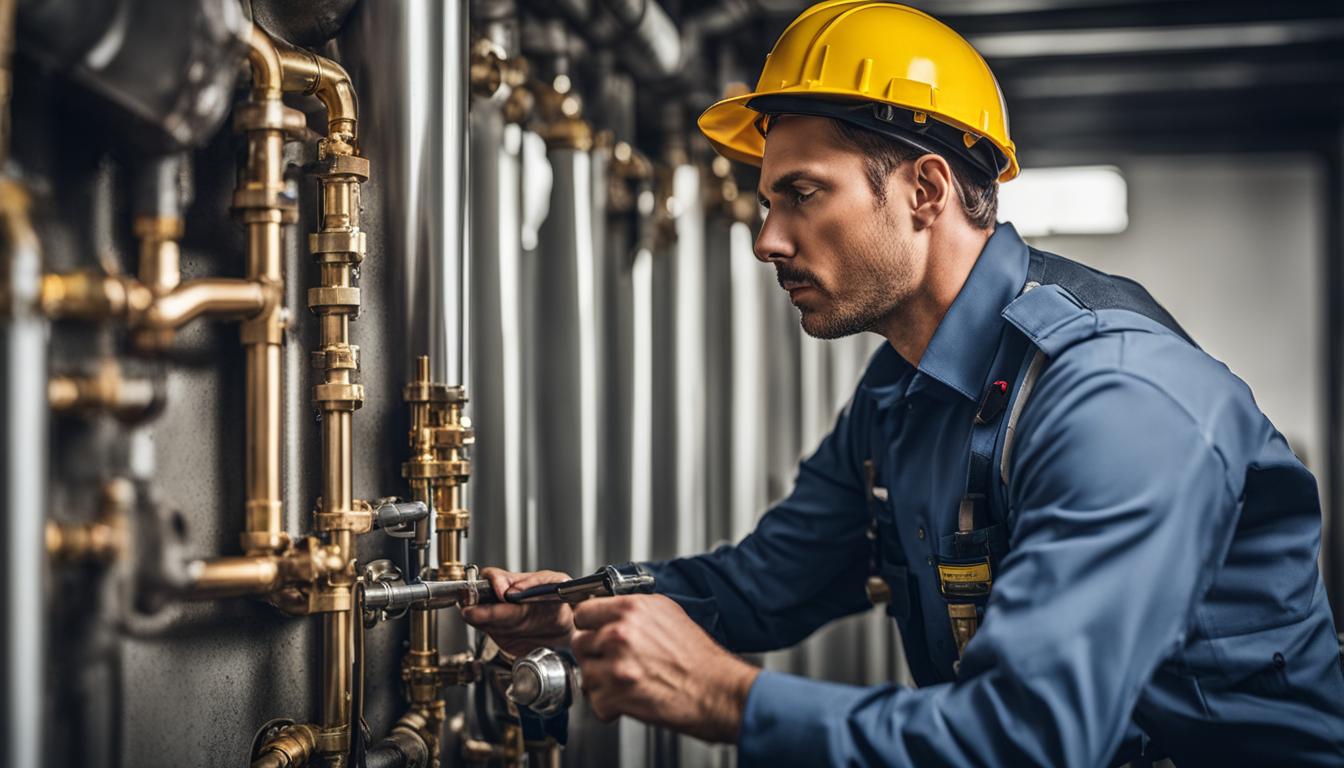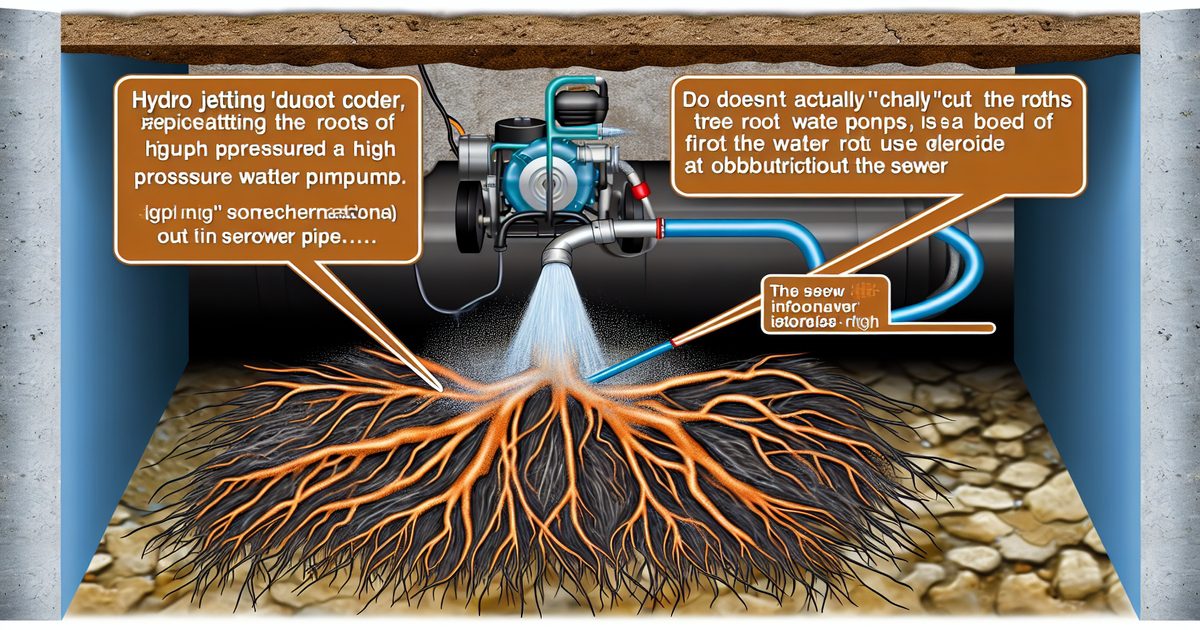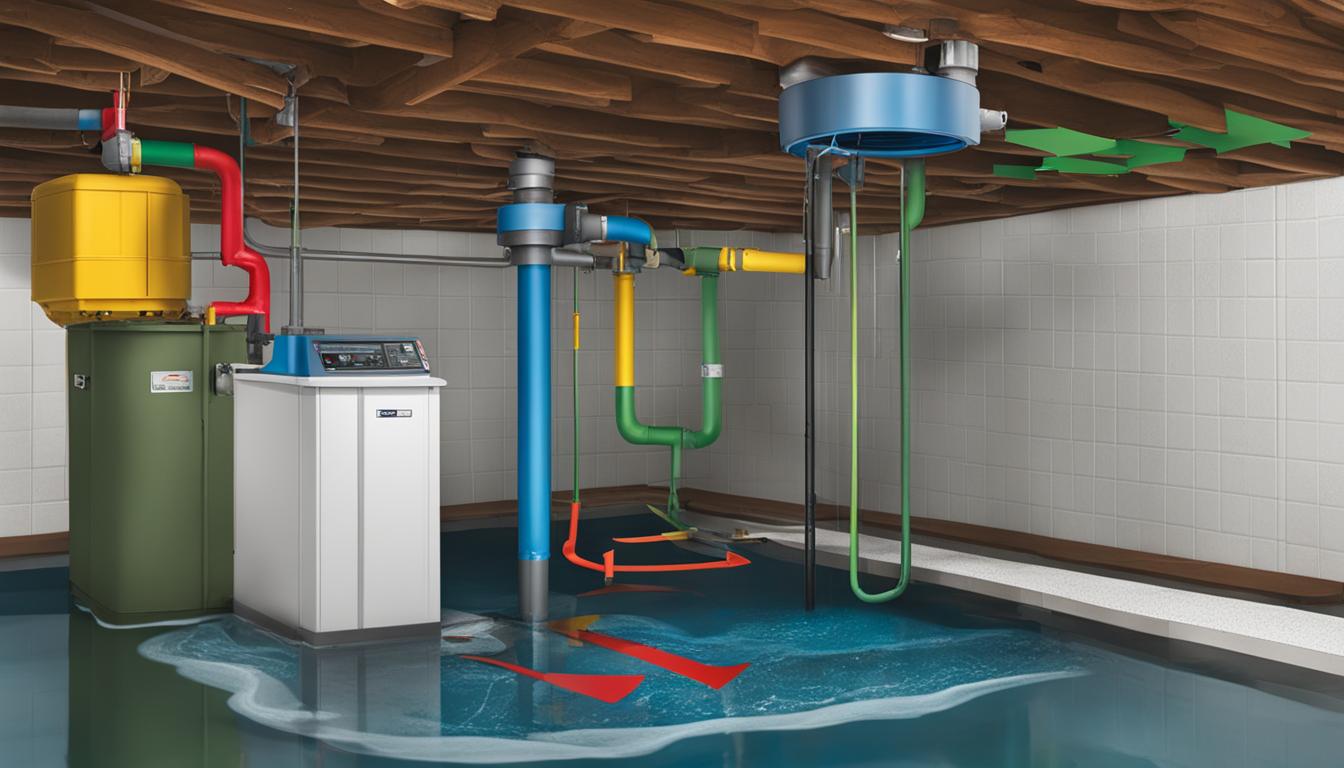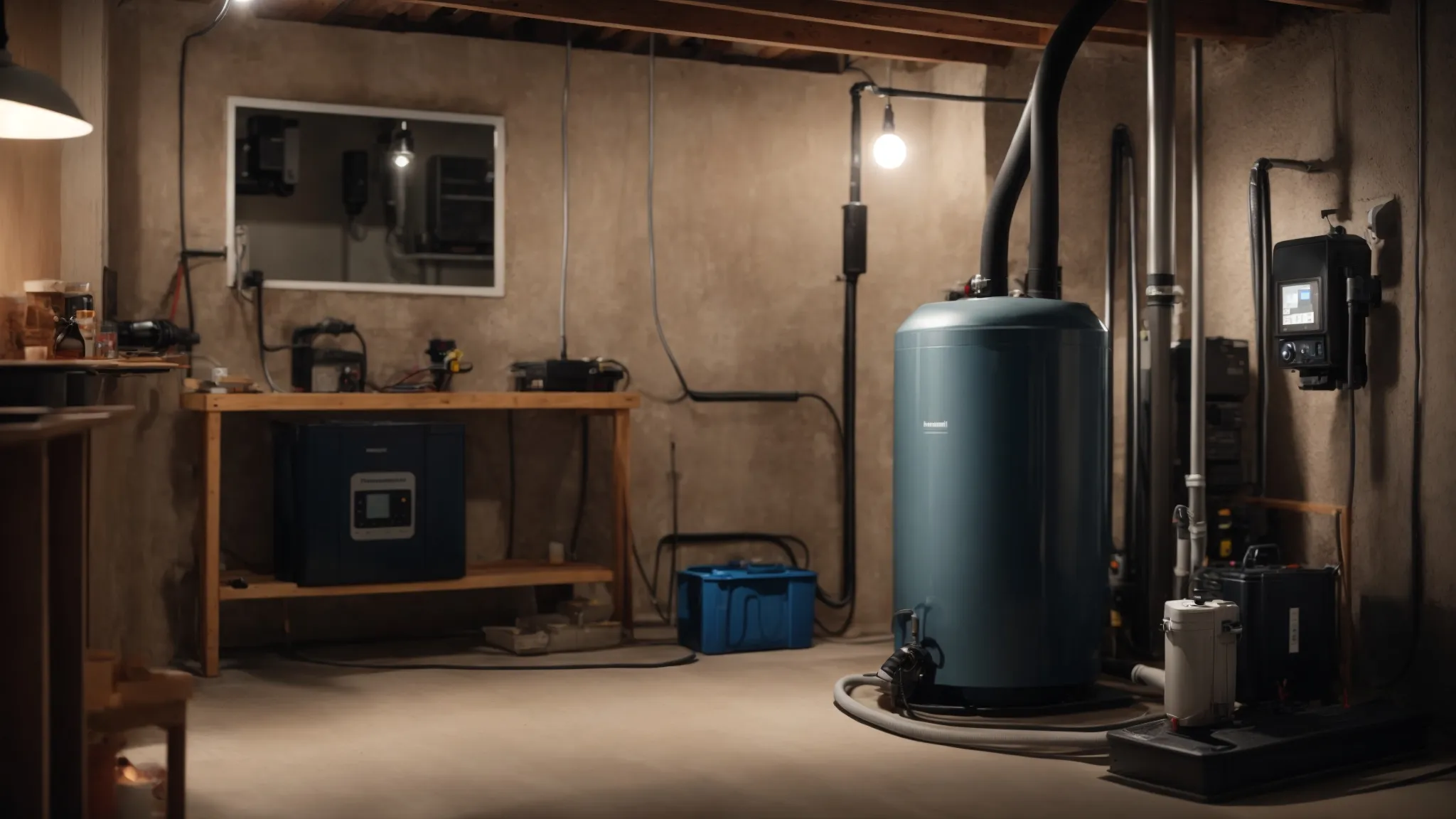Sewer jetters are the unsung heroes of plumbing, but maneuvering them around corners can be a real challenge. Fear not! In this guide, we’ll delve into the nitty-gritty of how to expertly navigate those tight bends with your sewer jetter. From understanding the equipment to mastering techniques, we’ve got you covered with information and cleaning tips. So, if you’ve ever found yourself in a bind trying to get around a tricky corner with your sewer jetter, worry no more – help is at hand.
Key Takeaways
- Understand the basics of sewer jetter operation to ensure efficient and effective corner navigation.
- Prepare for corner navigation by selecting the right nozzle, adjusting water pressure, and using proper technique to maneuver through bends and turns.
- Effectively navigate corners by maintaining a steady and controlled pace, adjusting nozzle angles, and using the right combination of water pressure and flow.
- Implement advanced corner cleaning tips such as using specialized nozzles and techniques to address challenging bends and corners effectively.
- Consider indoor and specialized uses of sewer jetters, ensuring proper adaptation and technique for navigating corners in different environments.
- Regular maintenance and proper usage contribute to the longevity of sewer jetters, ensuring continued effectiveness in corner navigation.
Understanding Sewer Jetter Basics
When using a sewer jetter, proper operation is key. Before starting, ensure the equipment is set up correctly. Familiarize yourself with the control panel to operate it effectively. Always adhere to the manufacturer’s guidelines for safe and efficient operation.
It’s crucial to follow specific steps when operating a sewer jetter. First, make sure that the equipment and cable are properly set up before use. Second, familiarize yourself with the control panel for smooth operation. Lastly, always refer to the manufacturer’s instructions for safety and best practices.
Pressure Washer Attachment
The attachment of the sewer jetter to a pressure washer requires attention to detail. It’s essential to ensure a secure and tight connection between the sewer jetter and pressure washer. Use appropriate fittings, jetter nozzle, that guarantee a leak-free attachment at all times.
Pipe Size Determination
Accurate pipe size determination is vital in utilizing a sewer jetter and nozzle effectively. Measure the diameter of the pipe precisely before initiating any jetting process. Based on this measurement, select an appropriate nozzle size that matches or complements the pipe diameter.
Preparing for Corner Navigation
Safety Considerations
When using a sewer jetter to navigate around corners, safety should be your top priority. Always wear protective gear such as gloves and eye protection to shield yourself from potential debris and splashing water. It’s crucial to keep bystanders at a safe distance during operation to prevent any accidents or injuries. Be extremely cautious of high-pressure water kickback, which can occur when navigating corners or bends in the pipes.
Ceramic Pipe Compatibility
Before maneuvering the sewer jetter around a corner, ensure that it is compatible with ceramic pipes. Verify if the sewer jetter and nozzle are suitable for use in ceramic pipes and check for any specific recommendations or restrictions provided by manufacturers. When operating within ceramic pipes, avoid using excessive pressure that may lead to damage.
Understanding the differences between mainline and lateral drain systems is essential when preparing to navigate corners with a sewer jetter nozzle. Adapt your technique based on the specific drain system type you are dealing with. For instance, mainline drain systems typically handle larger volumes of wastewater compared to lateral drain systems, requiring adjustments in navigation techniques.
Consider variations in layout and material composition when preparing to navigate corners with a sewer jetter. Different materials, nozzle, drain cleaner may require different levels of care during navigation; therefore, understanding these variations will help you adapt your approach accordingly.
Effective Corner Navigation
Technique Application
Different techniques are required for straight versus curved pipes. For straight pipes, you can maintain a constant forward motion. Adjusting the water pressure and flow rate is crucial for curved or tight elbows in the pipe to effectively navigate the corner without causing damage.
To successfully maneuver around corners with a sewer jetter, it’s essential to employ a consistent and steady motion during jetting. This ensures that debris and blockages are effectively cleared from the pipe while avoiding any potential damage caused by abrupt movements.
Tool Damage Avoidance
Inspecting the sewer jetter for signs of damage before use is vital in preventing further issues during corner navigation. By checking for wear and tear on the tool beforehand, you can ensure its optimal performance when navigating corners.
Moreover, it’s important to avoid dragging or forcing the jetter through tight corners as this can lead to damage. Using caution near bends minimizes wear on the tool and helps maintain its longevity for future use.
Advanced Corner Cleaning Tips
Tree Root Removal
It’s crucial to identify signs of intrusion in drainage systems, such as slow draining or gurgling sounds. Utilize specialized nozzles designed for effective root removal, like the spinning root cutter nozzle. Consider preventive measures like using chemical root inhibitors to inhibit future growth.
Thawing Frozen Lines
Thawing frozen lines requires applying gradual pressure to avoid further damage. Use warm water or appropriate thawing solutions and monitor progress closely. Sudden line bursts can occur due to rapid temperature changes, so proceed with caution.
Iron Ochre Clogs
Recognizing symptoms of iron ochre clogs in drainage systems is essential for effective cleaning. Look out for a slimy, orange-brown residue along the pipe walls and a rotten egg smell. Employ jetting techniques tailored to address iron ochre buildup, such as using higher pressure and hot water flushing.
Indoor and Specialized Uses
Indoor Jetter Use
When using a sewer jetter indoors, it’s crucial to take precautions to prevent water splatter. You should coordinate with occupants to ensure minimal disruption and safety. Choosing the right nozzle type for indoor pipe dimensions is essential.
For instance, when cleaning indoor pipes made of PVC, opting for a nozzle specifically designed for smaller diameters can help effectively navigate around corners without causing damage. By doing so, you can efficiently clean the pipes while safeguarding the indoor surfaces from any potential water splatter.
Swimming Pool Drains
Adhering to specific guidelines when using sewer jetters in swimming pool drains is vital. It’s important to safeguard against dislodging debris that could potentially affect the pool filtration systems.
For example, utilizing a wall-crawling nozzle when cleaning swimming pool drains allows for precise navigation around corners without disturbing the surrounding area or dislodging any debris that may compromise the functionality of the drainage system.
Maintenance and Longevity
Nozzle Care
Proper nozzle care is crucial for the longevity of your sewer jetter. After each use, make sure to thoroughly clean the nozzle to remove any debris or obstructions. This will prevent clogging and ensure that the water flow remains consistent during operation. Inspect the nozzle regularly for any signs of wear and tear. If you notice any damage, such as cracks or deformities, it’s essential to replace the nozzle promptly to maintain optimal performance.
It’s also important to choose the right type of nozzle for your specific needs. Different nozzles are designed for various applications, such as clearing blockages or descaling pipes. By selecting the appropriate nozzle, you can maximize efficiency and minimize unnecessary wear on your equipment.
Pressure Washer Recommendations
When using a sewer jetter, it’s imperative to select a compatible pressure washer with sufficient power and capabilities. Look for a pressure washer that delivers adequate water flow and pressure levels suitable for sewer jetting tasks. Ensure that the pressure washer is in good working condition before connecting it to your sewer jetter system.
Consider investing in high-quality hoses and fittings that are designed to withstand the demands of sewer jetting operations. These components play a critical role in maintaining consistent water flow and preventing leaks or malfunctions during corner navigation with a sewer jetter.
Sewer Jetter Troubleshooting
Usage Preparation
Before using a sewer jetter to get around a corner, it’s crucial to prepare adequately. First, ensure that the sewer jetting hose is securely attached and free from any kinks or blockages. Next, inspect the area around the corner for any potential obstructions or debris that could impede the process.
Once you’ve confirmed that everything is in order, slowly guide the sewer jetter around the corner while maintaining steady water pressure. It’s essential to be patient and methodical during this process to avoid any mishaps or damage to the equipment.
Buying vs Renting
When considering how to navigate corners with a sewer jetter, it’s important to weigh the option of purchasing your own equipment versus renting one. If you frequently encounter challenging corners in your line of work, investing in a high-quality sewer jetter may be more cost-effective in the long run.
On the other hand, if your usage is sporadic or limited to specific projects, renting a sewer jetter when needed might be a more practical choice. Renting allows you access to specialized equipment without shouldering the upfront costs of purchasing and maintaining it.
- Pros and Cons:
- Buying: Long-term cost savings for frequent use.
- Renting: Cost-effective for occasional needs without maintenance responsibilities.
Sewer Jetter Purchasing Guide
Buying vs Renting
You have the advantage of owning the equipment outright. This means no recurring rental fees and the freedom to use it whenever needed. On the other hand, renting provides flexibility for occasional use without the upfront cost of purchasing.
Buying a sewer jetter can be cost-effective in the long run if you frequently require its services. For instance, if you operate a professional plumbing business that routinely handles drain cleaning jobs, owning your equipment ensures immediate access and potential cost savings over time. However, if your needs are sporadic or short-term, renting might be more practical as it eliminates maintenance responsibilities and storage concerns.
Expedited Delivery
When purchasing a sewer jetter, consider expedited delivery options offered by suppliers. Some companies provide expedited shipping for urgent orders or emergency replacements. This is particularly beneficial for businesses reliant on their equipment for day-to-day operations.
Expedited delivery ensures that you receive your sewer jetter promptly, minimizing downtime and allowing you to resume work swiftly. For example, in situations where unexpected breakdowns occur or when additional units are required due to increased demand, expedited delivery can be crucial in maintaining operational efficiency.
Parts Availability
Before making a purchase decision on a sewer jetter model, assess parts availability from different manufacturers or suppliers. It’s essential to ensure that replacement parts are readily accessible in case of malfunctions or wear and tear over time.
Opting for a brand with easily obtainable parts reduces downtime caused by waiting for replacements.
Mechanical Snake vs Sewer Jetter
Key Differences
Understanding the key differences between a mechanical snake and a sewer jetter is crucial. While a mechanical snake uses a flexible cable with blades to break up blockages, a sewer jetter relies on high-pressure water to clear obstructions. The mechanical snake is effective for simple clogs but may struggle with hardened debris or tree roots. On the other hand, the sewer jetter’s powerful water stream can easily dislodge even the most stubborn build-ups.
A plumber faced with a severely blocked pipe might opt for a sewer jetter due to its ability to thoroughly clean the entire diameter of the pipe. In contrast, when dealing with minor stoppages or navigating tight bends such as around corners, using a mechanical snake could be more practical. Understanding these nuances helps plumbers choose the right tool for specific scenarios.
Application Scenarios
In real-world scenarios, imagine encountering an obstruction at an elbow joint within your home’s drainage system. Here, employing a sewer jetter equipped with suitable nozzle attachments allows you to navigate around corners effortlessly while delivering enough force to clear out accumulated grime effectively. Conversely, attempting this task with just a mechanical snake might prove challenging due to limited maneuverability and less impactful cleaning power.
Another application scenario involves addressing blockages in municipal sewers where access points are often located at sharp angles or curves.
Closing Thoughts
Navigating corners with a sewer jetter can be tricky, but with the right techniques and equipment, you can effectively tackle this challenge. By understanding the basics, preparing adequately, and implementing advanced cleaning tips, you can ensure that no corner is too tough to clean. Whether it’s indoor or specialized use, proper maintenance and troubleshooting are crucial for the longevity of your sewer jetter.
Now that you’ve gained insights into mastering corner navigation with a sewer jetter, it’s time to put these strategies into practice. Don’t let those pesky corners intimidate you any longer. Get out there, equip yourself with the knowledge from this guide, and show those corners who’s boss!
Frequently Asked Questions
How does a sewer jetter work?
A sewer jetter works by using high-pressure water to clear blockages and debris from pipes. The nozzle releases a powerful stream of water that can navigate bends and corners, effectively cleaning the entire pipe.
What should I consider when preparing for corner navigation with a sewer jetter?
When preparing for corner navigation, it’s essential to use the appropriate nozzle for navigating corners, ensure proper safety measures are in place, and carefully assess the layout of the pipes to plan your approach effectively.
Are there any specialized uses for sewer jetters indoors?
Yes, sewer jetters can be used indoors for various applications such as clearing kitchen sink drains, bathroom drains, and other indoor plumbing systems. However, it’s crucial to use them with caution and follow all safety guidelines.
How do I troubleshoot common issues with a sewer jetter?
Common issues with sewer jetters include loss of pressure, nozzle clogging, or hose kinking. Troubleshooting involves checking connections for leaks or blockages, inspecting nozzles for debris buildup, and ensuring proper water flow through the system.
What are some key differences between a mechanical snake and a sewer jetter?
A mechanical snake physically rotates to break up clogs within pipes but may not thoroughly clean the entire pipe. On the other hand, a sewer jetter uses high-pressure water to not only remove clogs but also thoroughly clean the interior walls of pipes.
